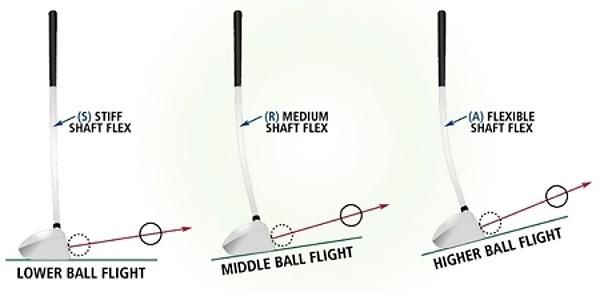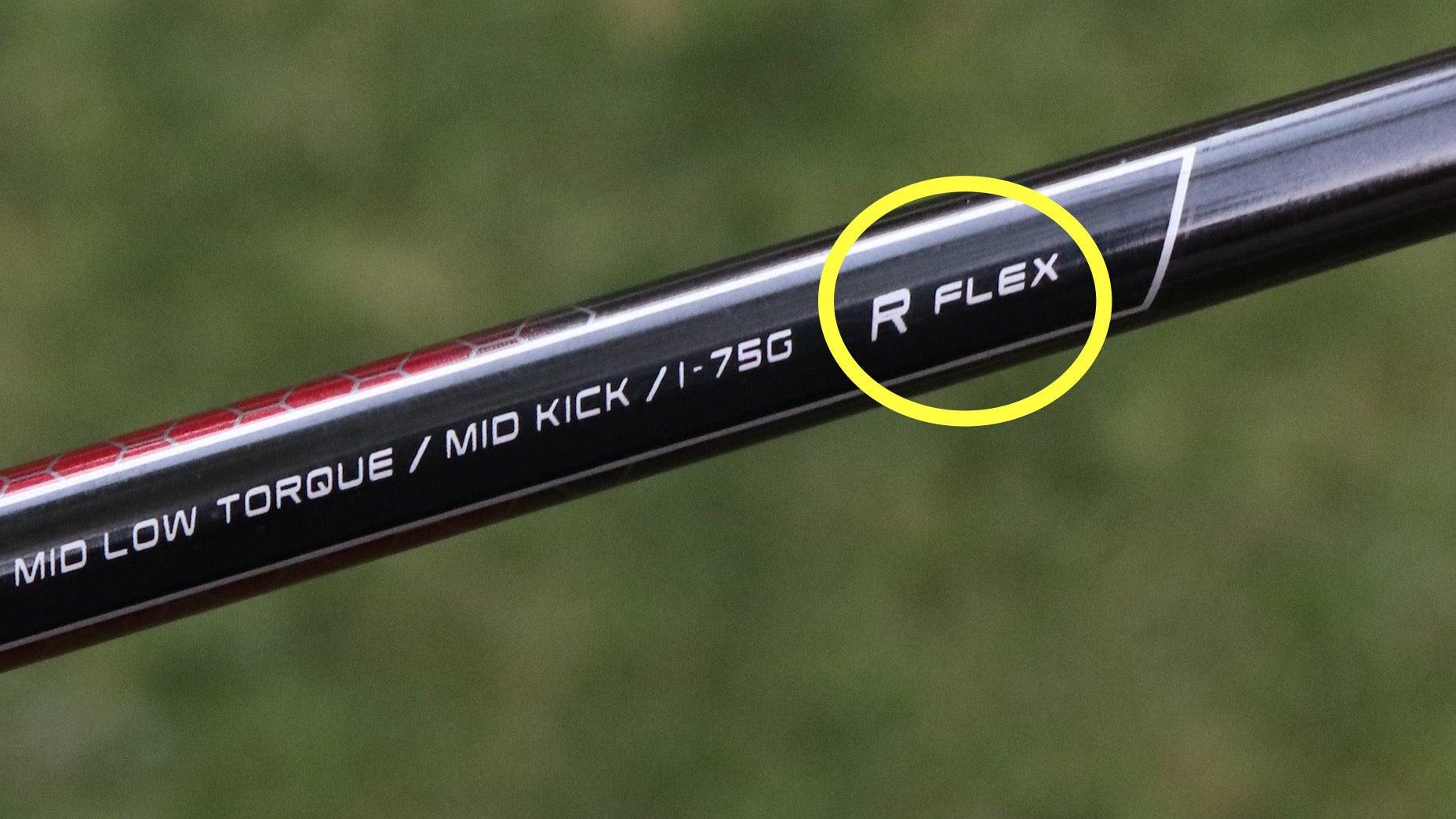The nexus of shaft flex and golf driver proficiency is a multifaceted concept that warrants exploration. The intricacies of shaft flex influence a multitude of factors, including ball speed, launch angle, and shot consistency. By analyzing an individual’s unique swing attributes, custom-fitting experts can tailor shaft flex choices to optimize both distance and accuracy. This article delves into the scientific principles underlying shaft flex and its impact on golf driver performance, providing a comprehensive guide for golfers seeking to enhance their skills and elevate their game.
Shaft Flex and Driver Performance: A Mechanistic Interplay
The relationship between shaft flex and driver performance is a complex interplay of physical forces and golfer characteristics. Shaft flex refers to the degree to which the shaft bends during the swing, and it directly influences the club’s dynamic properties.
A stiffer shaft provides less flexibility and greater stability during impact. This results in a more consistent launch angle with less sidespin, leading to increased accuracy and distance for players with higher swing speeds. Stiffer shafts also promote a lower ball flight trajectory, allowing for better control in windy conditions.
Conversely, a more flexible shaft bends more during the swing, imparting greater spin on the ball. This results in a higher launch angle with more backspin, which can optimize carry distance for golfers with slower swing speeds. Flexible shafts also provide a more forgiving feel, reducing the impact of slight mishits. However, they may lead to less accuracy and control for high-swing-speed players.

Tailoring Shaft Flex for Enhanced Ball Speed and Launch Angle
The shaft flex of a golf driver plays a pivotal role in determining the speed and launch angle of the ball. Understanding the relationship between shaft flex and ball dynamics is crucial for optimizing driver performance.
Golfers with a faster swing speed typically benefit from a stiffer shaft, as it reduces shaft whip and promotes a more stable swing path. This can result in increased ball speed and reduced spin, leading to longer carry distances. Conversely, golfers with a slower swing speed may prefer a more flexible shaft, which allows the shaft to load and unload more easily, resulting in a higher launch angle and increased spin.
The optimal shaft flex also depends on the desired swing characteristics. For example, those seeking a piercing ball flight with low spin should opt for a stiffer shaft, while those desiring a higher, more forgiving ball flight may prefer a more flexible shaft. By tailoring the shaft flex to individual swing attributes, golfers can maximize ball speed and launch angle, unlocking a new level of driving distance and accuracy.
| Shaft Flex | Ball Speed | Launch Angle |
|—|—|—|
| Stiff | Higher | Lower |
| Regular | Moderate | Moderate |
| Flexible | Lower | Higher |
Optimizing Shaft Flex for Shot Consistency and Accuracy
Shaft flex plays a crucial role in maintaining shot consistency and accuracy. By matching the right shaft flex to your swing dynamics, you can improve your chances of striking the ball consistently on the desired target line.
Golf Swing Attributes and Ideal Shaft Flex Selection
Swing speed, tempo, and transition are crucial in identifying the optimal shaft flex. Faster swing speeds, influenced by factors such as strength and athleticism, necessitate stiffer shafts, typically categorized as ”stiff” or “extra stiff.” These shafts provide enhanced control, reducing excessive bending during impact for greater accuracy.
Conversely, slower swing speeds and smoother tempos benefit from more flexible shafts, such as “senior” or “ladies,” respectively. These shafts promote a higher ball launch, improving distance for players with less power. Additionally, smoother transitions, where the initial downswing and transition into the impact zone are fluid and controlled, indicate a preference for a softer flex.
Identifying swing attributes beyond speed, such as transition smoothness and tempo, allows for a more refined shaft flex selection process. By considering these factors, golfers can optimize their driver performance, aligning shaft flex with their specific swing characteristics for greater distance, accuracy, and consistency.
Driver Proficiency Through Shaft Flex Optimization: A Comprehensive Guide
Understanding the Correlation between Shaft Flex and Swing Attributes
The type of shaft flex an individual requires is contingent upon their unique swing characteristics. While there are many determining factors to consider, three primary swing attributes play a pivotal role in shaft flex optimization: swing speed, tempo, and transition. Swing speed primarily influences the flex of the shaft, with faster swings demanding stiffer shafts to maintain stability. Tempo, the pace at which a swing is executed, also impacts flex selection. Slower tempos favor stiffer shafts to facilitate better timing at impact. the transition, or the point where the downswing changes direction, heavily influences shaft flex. Players with quick transitions need stiffer shafts for increased control, while those with smoother transitions may benefit from more flexible shafts.
The Impact of Shaft Flex on Ball Trajectory and Carry Distance
The correct shaft flex not only enhances swing mechanics but also significantly alters ball trajectory and carry distance. Stiffer shafts promote lower ball trajectories with less spin, leading to increased roll and overall distance. Conversely, more flexible shafts produce higher trajectories with increased ball spin, resulting in shorter carry distances and more stopping power on the green. Optimal shaft flex allows players to maximize their potential driving distance by balancing spin, launch angle, and trajectory.
Table: General Shaft Flex Recommendations Based on Swing Speed
| Swing Speed (mph) | Shaft Flex |
| — | — |
| Under 85 | Regular |
| 85-95 | Regular-Stiff |
| 95-105 | Stiff |
| 105-115 | Extra-Stiff |
| Over 115 | Double-Extra Stiff |
Outro
understanding the intricate relationship between shaft flex and golf driver proficiency unlocks new frontiers for golfers of all levels. By carefully selecting a shaft that harmonizes with their swing characteristics, golfers can optimize accuracy, distance, and overall swing dynamics.
This article elucidated the fundamental principles governing shaft flex and its impact on driver performance. Through meticulous analysis and practical examples, we have demonstrated that the choice of shaft flex is not merely an afterthought but an integral component of achieving golfing excellence. By embracing this knowledge, golfers can embark on a transformative journey, elevating their game to unprecedented heights.
As the golfing landscape continues to evolve, the pursuit of perfection necessitates a comprehensive approach that encompasses both technical proficiency and tactical acumen. Harnessing the power of strategic swing refinement, golfers can transcend limitations and achieve their golfing aspirations.





